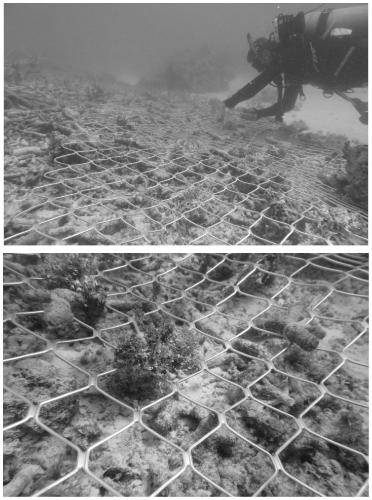Degraded coral reef bioremediation method based on macrocalcified algae
A technology for coral reefs and seaweeds, which is applied in the application field of biotechnology and achieves the effects of a simple transplant method, low transplant cost and simple method.
- Summary
- Abstract
- Description
- Claims
- Application Information
AI Technical Summary
Problems solved by technology
Method used
Image
Examples
Embodiment 1
[0038] 1. Sample collection and holding
[0039] In order to better reflect the repairing effect of large-scale calcified algae, this experiment selected large-scale calcified seaweeds widely distributed in the coral reef ecosystem of the South China Sea, such as Halimeda, Amphiroa and shell-like coralline algae. According to the shape of the algae, different transplanting and feeding methods were adopted ( figure 1 ). There are two main ways to obtain seedlings, one is through artificial semi-indoor breeding technology; the second is through in-situ sampling in the field to ensure sufficient, stable and healthy sources of algal species. Put the seaweed in 10 250L polyethylene large white buckets in batches and inflate them temporarily. The water temperature is between 27-29°C; the seawater for cultivation is replaced every 2 days. The salinity of the seawater is between 32-34ppt, and the pH range is 8.02 –8.23; the light cycle (Light: Dark) is set to 16L:8D, and the light i...
PUM
 Login to View More
Login to View More Abstract
Description
Claims
Application Information
 Login to View More
Login to View More - R&D
- Intellectual Property
- Life Sciences
- Materials
- Tech Scout
- Unparalleled Data Quality
- Higher Quality Content
- 60% Fewer Hallucinations
Browse by: Latest US Patents, China's latest patents, Technical Efficacy Thesaurus, Application Domain, Technology Topic, Popular Technical Reports.
© 2025 PatSnap. All rights reserved.Legal|Privacy policy|Modern Slavery Act Transparency Statement|Sitemap|About US| Contact US: help@patsnap.com



